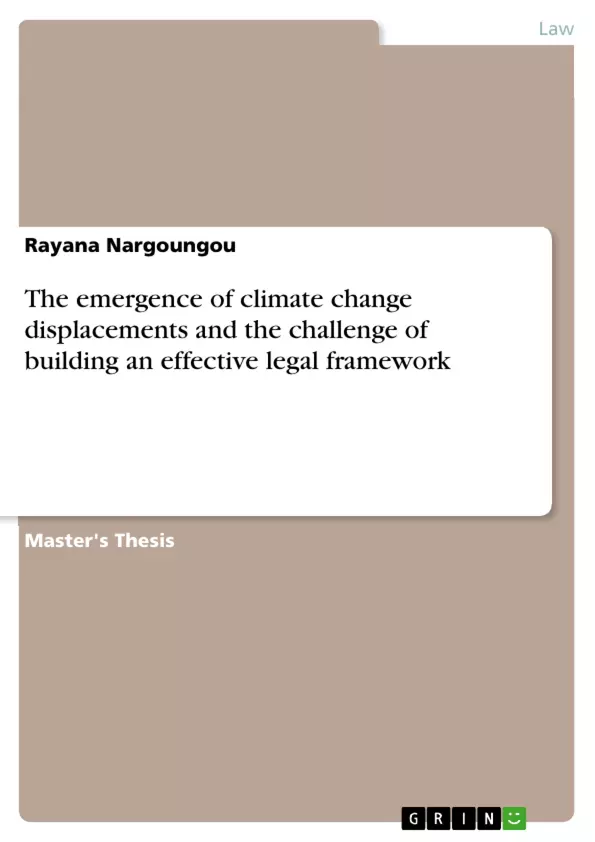This work is aimed to identify the direct and indirect effect of climate change on a population’s mobility before analyzing the possible perspectives to those more directly affected by it. Indeed, climate change is responsible for a brand-new category of asylum seekers that calls for specific recognition and management by the International law.
Scientists urged on the fact that our planet might have more inhabitable parts due to the alarmingly fast climate change that causes critical environmental deterioration. Consequently, it has already started impacting millions of lives across the globe.
It is not only a matter of environmental effects, but it also has enormous socio-economic and therefore legal impacts. Among these consequences, is the climate change induced migration that leads to multiple issues.
Inhaltsverzeichnis (Table of Contents)
- Introduction
- Title I: The climate change migrants
- Chapter 1: The consequences of environmental change and its impact on human mobility
- Section 1: General migration theories
- Chapter 1: The consequences of environmental change and its impact on human mobility
- Title II-Climate change refugees and international law.
- Conclusion
- ANNEX.
Zielsetzung und Themenschwerpunkte (Objectives and Key Themes)
This work aims to examine the direct and indirect effects of climate change on population mobility and analyze the possible perspectives for those most directly affected. The goal is to understand how climate change is creating a new category of asylum seekers and the need for specific recognition and management by international law.
- The consequences of climate change on human mobility
- The challenges of managing climate change-induced migration
- The adequacy of current legal frameworks for addressing climate change refugees
- The need for a specific legal framework to address climate change-induced displacement
- The importance of global collaboration in preventing and managing climate change displacement
Zusammenfassung der Kapitel (Chapter Summaries)
The first chapter delves into general migration theories, exploring the classical macroeconomic and microeconomic perspectives on migration. It highlights the "New Economics of Labor Migration," which emphasizes household decision-making and livelihood diversification as key drivers of migration, moving beyond the traditional focus on individual opportunity-seeking. The chapter examines push and pull factors, including poverty, lack of opportunities, employment prospects, and personal characteristics such as age, gender, and ethnicity. It also analyzes the role of geographical, infrastructural, and financial barriers in influencing migration patterns.
Schlüsselwörter (Keywords)
Climate change, migration, displacement, refugees, asylum seekers, international law, legal framework, environmental change, human mobility, adaptation, poverty, livelihood diversification, push and pull factors.
- Citar trabajo
- Rayana Nargoungou (Autor), 2018, The emergence of climate change displacements and the challenge of building an effective legal framework, Múnich, GRIN Verlag, https://www.grin.com/document/477216



